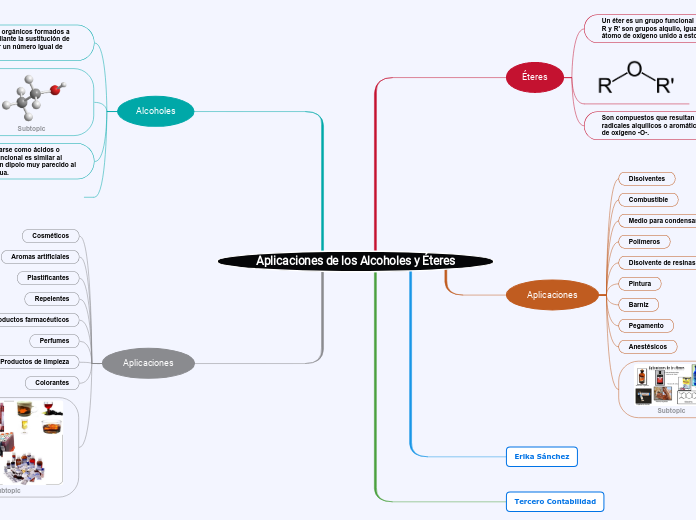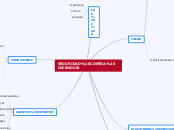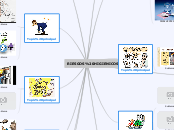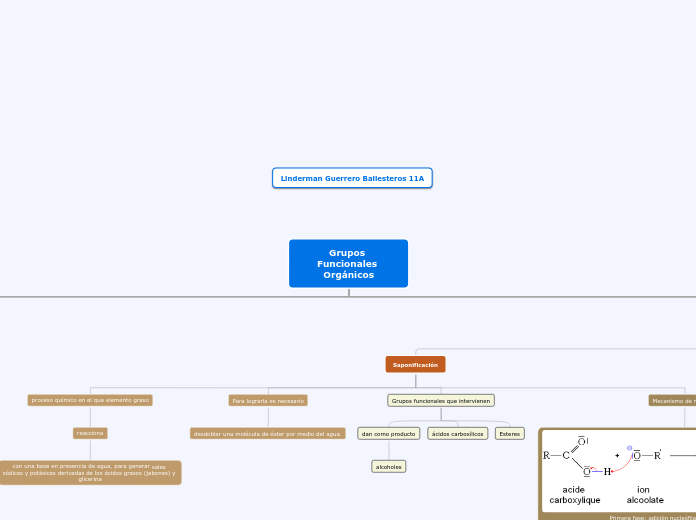Aplicaciones de los Alcoholes y Éteres
The Solar System is the gravitationally bound system of the Sun and the objects that orbit it, either directly or indirectly. Of the objects that orbit the Sun directly, the largest are the eight planets, with the remainder being smaller objects, the dwarf planets, and small Solar System bodies.
Saturn is known most for its rings.
Galileo Galilei first thought it was an object with three parts: a planet and two large moons on either side.
Not knowing he was seeing a planet with rings, the stumped astronomer entered a small drawing — a symbol with one large circle and two smaller ones — in his notebook.
The rings are made of ice and rock and scientists are not yet sure how they formed. The gaseous planet is mostly hydrogen and helium.
Colorantes
Productos de limpieza
Perfumes
Productos farmacéuticos
Repelentes
Saturn has over 150 moons and satellites. However, of these vast numbers of moons, only 62 are known and confirmed as moons.
Name at least 5 of these moons.
Plastificantes
How long does it take for Saturn to go around the sun?
Aromas artificiales
A planet's day is the time it takes the planet to rotate or spin once on its axis.
Write down Saturn's day measured in Earth days.
Cosméticos
Alcoholes
Uranus is an oddball. It has clouds made of hydrogen sulfide, the same chemical that makes rotten eggs smell so foul.
It rotates from east to west like Venus. Its tilt causes extreme seasons that last 20-plus years, and the sun beats down on one pole or the other for 84 Earth-years at a time.
Methane in the atmosphere gives Uranus its blue-green tint. It also has 13 sets of faint rings.
Los alcoholes pueden comportarse como ácidos o
bases gracias a que el grupo funcional es similar al
agua, por lo que se establece un dipolo muy parecido al que presenta la molécula de agua.
Uranus has 27 moons that we know of. Five of the moons are large and the rest are much smaller.
Name these 5 moons.
Los alcoholes son compuestos orgánicos formados a partir de los hidrocarburos mediante la sustitución de uno o más grupos hidroxilo por un número igual de átomos de hidrógeno
A planet's day is the time it takes the planet to rotate or spin once on its axis.
Write down Uranus's day measured in Earth days.
Tercero Contabilidad
Erika Sánchez
Aplicaciones
Jupiter is a giant gas world that is the most massive planet in our solar system.
Its swirling clouds are colorful due to different types of trace gases.
And a major feature in its swirling clouds is the Great Red Spot, a giant storm more than 10,000 miles wide. It has raged at more than 400 mph for the last 150 years, at least.
Jupiter has a strong magnetic field, and with 75 moons, it looks a bit like a miniature solar system.
Subtopic
Anestésicos
Pegamento
Barniz
Pintura
Disolvente de resinas
Polímeros
Jupiter has a strong magnetic field, and with 75 moons, it looks a bit like a miniature solar system.
Name the 4 most known moons.
Medio para condensar
How long does it take for Jupiter to go around the sun?
Combustible
A planet's day is the time it takes the planet to rotate or spin once on its axis.
Write down Jupiter's day measured in Earth days.
Disolventes
Éteres
Mars is a cold, desert-like place covered in dust. This dust is made of iron oxides, giving the planet its iconic red hue.
Mars shares similarities with Earth: It is rocky, has mountains, valleys and canyons, and storm systems ranging from localized tornado-like dust devils to planet-engulfing dust storms.
Son compuestos que resultan de la unión de dos radicales alquílicos o aromáticos a través de un puente de oxígeno -O-.
A planet's day is the time it takes the planet to rotate or spin once on its axis.
Write down Mars's day measured in Earth days.
Un éter es un grupo funcional del tipo R-O-R', en donde R y R' son grupos alquilo, iguales o distintos, estando el átomo de oxígeno unido a estos.
Our Solar System has eight “official” planets which orbit the Sun.
Each planet is at a different distance from the sun. Name its position.









